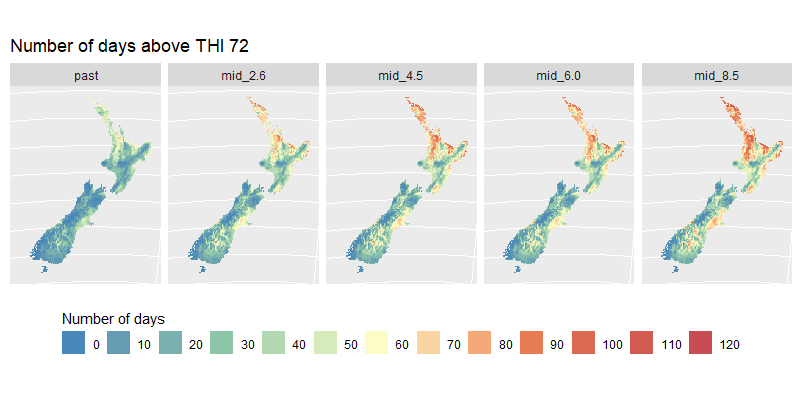Dairy heat stess under climate change
Data and Resources
-
THI exceeds 72 (number of days) at the historical basline (1981-2000)TIF
License: CC BY-NC 4.0 Attribute to: NIWA Description THI(72) is the number of...
-
THI exceeds 72 (number of days) at mid century (2041-2060) RCP 2.6TIF
License: CC BY-NC 4.0 Attribute to: NIWA Description THI(72) is the number of...
-
THI exceeds 72 (number of days) at mid century (2041-2060) RCP 4.5TIF
License: CC BY-NC 4.0 Attribute to: NIWA Description THI(72) is the number of...
-
THI exceeds 72 (number of days) at mid century (2041-2060) RCP 6.0TIF
License: CC BY-NC 4.0 Attribute to: NIWA Description THI(72) is the number of...
-
THI exceeds 72 (number of days) at mid century (2041-2060) RCP 8.5TIF
License: CC BY-NC 4.0 Attribute to: NIWA Description THI(72) is the number of...
-
THI exceeds 72 (number of days) at end century (2081-2100) RCP 2.6TIF
License: CC BY-NC 4.0 Attribute to: NIWA Description THI(72) is the number of...
-
THI exceeds 72 (number of days) at end century (2081-2100) RCP 4.5TIF
License: CC BY-NC 4.0 Attribute to: NIWA Description THI(72) is the number of...
-
THI exceeds 72 (number of days) at end century (2081-2100) RCP 6.0TIF
License: CC BY-NC 4.0 Attribute to: NIWA Description THI(72) is the number of...
-
THI exceeds 72 (number of days) at end century (2081-2100) RCP 8.5TIF
License: CC BY-NC 4.0 Attribute to: NIWA Description THI(72) is the number of...
-
THI72 Change by mid century PREVIEW.pngPNG
License: CC BY 4.0 Description This is the data preview image for the...
